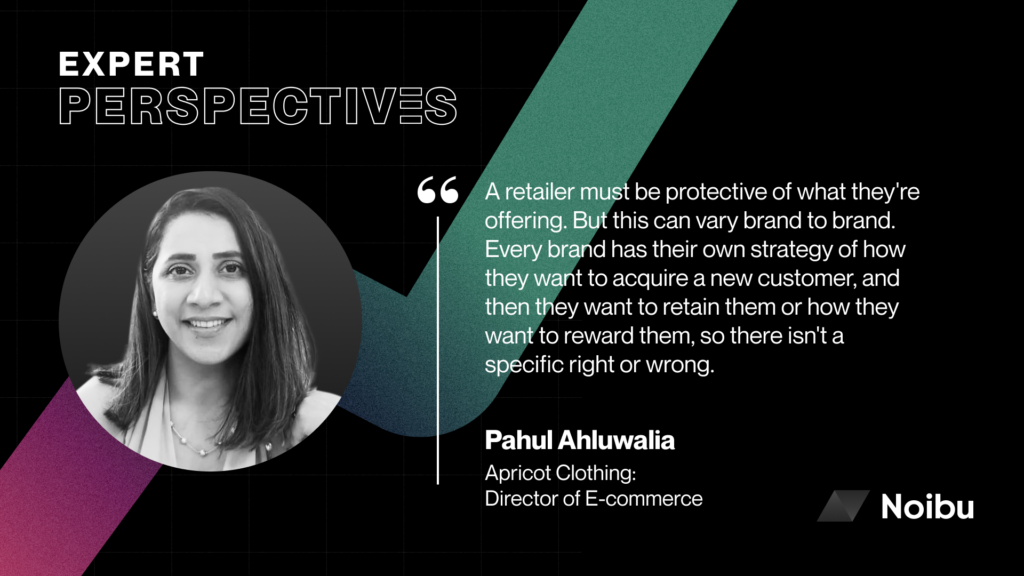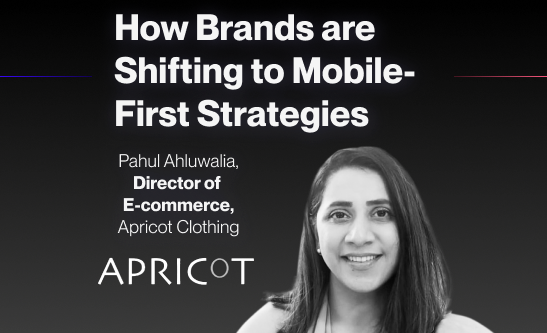COVID-19 shifted retail online, and the e-commerce space has become far more competitive because of it.
How do brands maintain profitability in the new era of the industry?
In this episode of The E-commerce Toolbox: Expert Perspectives, host Kailin Noivo is joined by Pahul Ahluwalia, Director of E-commerce at Apricot Clothing. Together, they explore the evolution of e-commerce, highlighting how COVID-19 and AI have fast-tracked its evolution and shifted strategies towards being mobile-first, as well as how to drive conversion and balance profitability with competitive pricing.
The Pace of E-commerce Evolution
The COVID-19 pandemic pushed retail online, which caused a lot of brands to fast-track their five-year e-commerce strategy, fitting it into just one year.
Pahul predicts a similar pattern will come in the near future, due to the rise of AI. This is especially likely considering how many use cases of AI we are already seeing today, from optimizing searches to writing product descriptions. However, Pahul advises against complacency, explaining that AI could be destructive, as well as constructive. Thus, we need to remain aware of the challenges and implications that come with introducing AI capabilities.

The Key to a Healthy Conversion Rate
Pahul sees the key to driving conversion rates as reducing the number of clicks. Why?
She says, “Reduce the number of clicks, reduce the time in the decision making.”
The longer a customer has to think about their purchasing decision, the less likely they are to go through with their purchase.
So, Pahul recommends ensuring that every element of your website is set up in a way that drives customers towards the checkout. This includes measures such as add-to-cart buttons wherever a product is listed, product descriptions that are visible on the landing page so the customer doesn’t have to click away, and relevant, personalized recommendations for every user.
By adding measures like these, Pahul explains that your customers’ purchasing decisions will be straightforward, leading to an increase in conversion rates.
Shifting to Mobile-First
Over the past five years, the percentage of total traffic attributable to mobile devices has steadily increased across the e-commerce industry. This has led many brands, including Apricot Clothing, to shift their strategy to mobile-first.
“Whether you’re designing a home page or you’re designing a listings page or checkout, whatever it is that you are looking to redesign, mobile-first, and I think that’s the thumb rule that applies to most retailers today.”
On mobile devices, space is limited, and Pahul explains that this leads to two buckets of customers. The first is those who are overwhelmed with choice, and the second is those who actively want to be shown a lot of choice. She explains that, in order to cater to both groups, it is important to optimize your search and filter functions.
The group overwhelmed with choice needs to be able to refine their search down to only the items they are interested in, as well as have the opportunity to view just one product per line. The group looking for a choice, however, would like to see as much as possible, with the option to view five products per line so they can quickly scroll through and browse.
By allowing options that encompass all customers’ preferences, you will likely see conversions increase. Of course, not all brands will want their customers to have that much choice. A luxury jewelry brand, for example, rarely expects customers to buy more than one or two items at a time, so they would want to limit viewing options so as not to suggest to customers that they are expected to buy multiple items in one session.
Pahul explains that it is down to individual brands to explore the limits they want to impose on their search and filter functionality, deriving them from their customer base as well as their brand goals.
Balancing Profitability and Competitive Pricing
With e-commerce on the rise, there is a stronger need for competitive pricing, but many brands are concerned about how to maintain profitability whilst remaining competitive.
For Apricot, the answer is simple: they believe the first price is the right price, and so rarely offer sales and promotions. Pahul explains that this prevents their customers from being conditioned into only shopping with them during a sale, which would limit profits. They maintain competitiveness by ensuring that the price of every item is in line with the quality of the piece and competitors.
Pahul further explains that most shoppers are now aware of the strategies that e-commerce brands often use to drive conversion, such as abandoned cart promotions, which has led customers to become more confident about delaying purchases. They know that if they wait, they will likely get a discount. Thus, brands need to be careful with implementing price elasticity models to make sure they will work for their goals before implementing them.

Listen to the Full Episode Below!
Tune in to this episode of The E-commerce Toolbox: Expert Perspectives with Pahul Ahluwalia and Kailin Noivo to learn more about driving conversion and increasing profitability.
👉 Apple: https://apple.co/4aUTDpC
👉 Spotify: https://spoti.fi/3xCu9Ps



